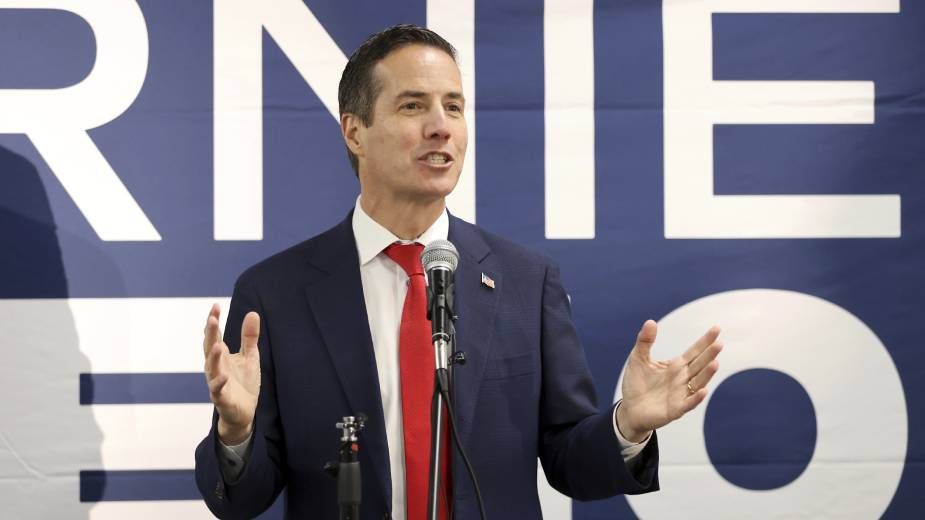The Real Cost to Employers of Legal Marijuana
Editor’s Note: The following commentary was submitted by Angela McClellan, executive director of the Coalition for a Drug-Free Mahoning County.
YOUNGSTOWN, Ohio — As Election Day draws near, the legalization of marijuana in Ohio has stirred much debate over state Issue 3.
Arguments cover the spectrum with marijuana being called everything from a gateway drug to a medicine, yet few in the debate have defined what the legalization of marijuana could mean to employers.
So it is important to understand that Ohio is not conducting a referendum where voters want the state Legislature to legalize marijuana. Rather, they are asked to adopt an amendment to the state constitution. This means that, should Issue 3 pass, the Legislature cannot alter or circumvent the amendment and any future changes would require a new amendment, a lengthy and expensive process. It would be the only means of correcting what Ohioans might want to change Issue 3.
It is equally important to understand that some of the marketing advocating passage is misleading. For instance, there are marijuana-based pharmaceutical medications available through a pharmacy (Marinol and Sativex). A third, Epidiolex, is nearing the end of its FDA approval phase as an anti-seizure medication (for Dravet’s Syndrome and other seizure disorders) and are available to Ohio residents through the Orphan Drug Act administered by the FDA. This requires the prescribing physician to complete a brief form certifying necessity to allow purchase and consumption of the drug by an Ohio resident.
Today, in Ohio, we can provide legal, FDA-tested compassionate care through existing channels that do not require amending the Ohio Constitution.
The gap in information is also apparent when it comes to how Issue 3 could affect an employer’s ability to provide a safe, productive workplace that meets employees’ needs without risking the bottom line.
Issue 3 would allow the personal use of marijuana for persons age 21 and older and medical use by those 18 older. While employers would be not required to permit their workforce the recreational use of marijuana on company time or on company property, they would not be able to restrict such use outside of their work schedules and would be required to treat medical use of marijuana the same as any other prescription medication.
For example, an employer who allows an employee to take prescribed Xanax or Lipitor on company premises would also have to allow medically-recommended marijuana on company property. To exclude recommended marijuana would likely require the owner to rewrite company policy and EAP practices or be subject to a lawsuit.
Should Issue 3 pass, employers could face costly litigation for discriminating against employees or applicants who use marijuana.
On Aug. 15, 2013, USA Today ran “Medical Marijuana Poses Litigation Risk to Employers” in which the paper said the average cost to defend such a lawsuit ran between $69,000 and $107,000, regardless of whether the employer prevailed.
In states where marijuana is legal, the gray area between state-legal yet federal-illegal plagues employers and has resulted in much of the case law developing around this subject.
Whether one votes for or against Issue 3, the importance of making an informed decision cannot be overstated. The employer should ask:
- Do my company’s employee policies, hiring practices, safety mechanisms and workforce training ensure that employees are protected and safe?
- Am I prepared to promptly evaluate and revise my policies should marijuana be legalized in Ohio?
- Do my key personnel understand the circumstances when federal law trumps state law regarding work-site policy, employee licensure/certification, and interstate travel?
- How do any changes in employee use and workplace policy affect the premiums paid to the Bureau of Workers Compensation and private insurers?
It would be an unfortunate side effect of legalization that would leave most employers grasping for answers and scrambling to find qualified professionals to help them navigate the uncharted waters of legal marijuana.
As an employer, you should learn more about the ramifications of Issue 3, research which agencies in your area could provide appropriate and legally sound information on changes in your company policy, and create a plan that puts you in charge of your workplace should legal marijuana become reality.
Such steps and direct communication with your employees will allay misconceptions and infractions, meet your employees’ need for safety and guard your bottom line.
Copyright 2024 The Business Journal, Youngstown, Ohio.



